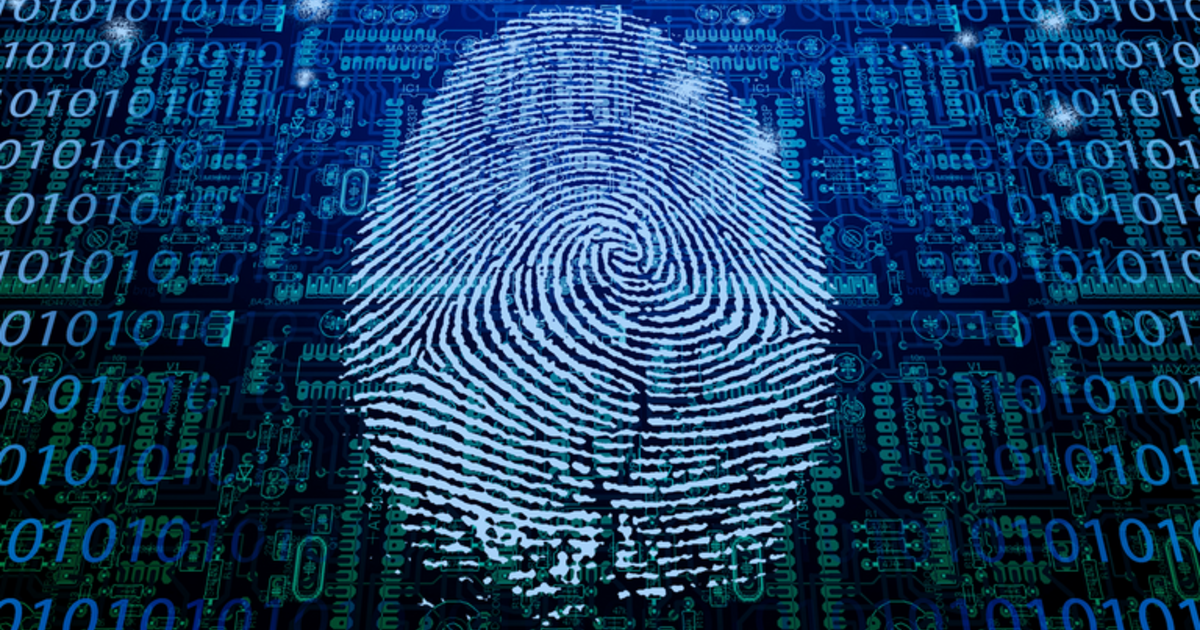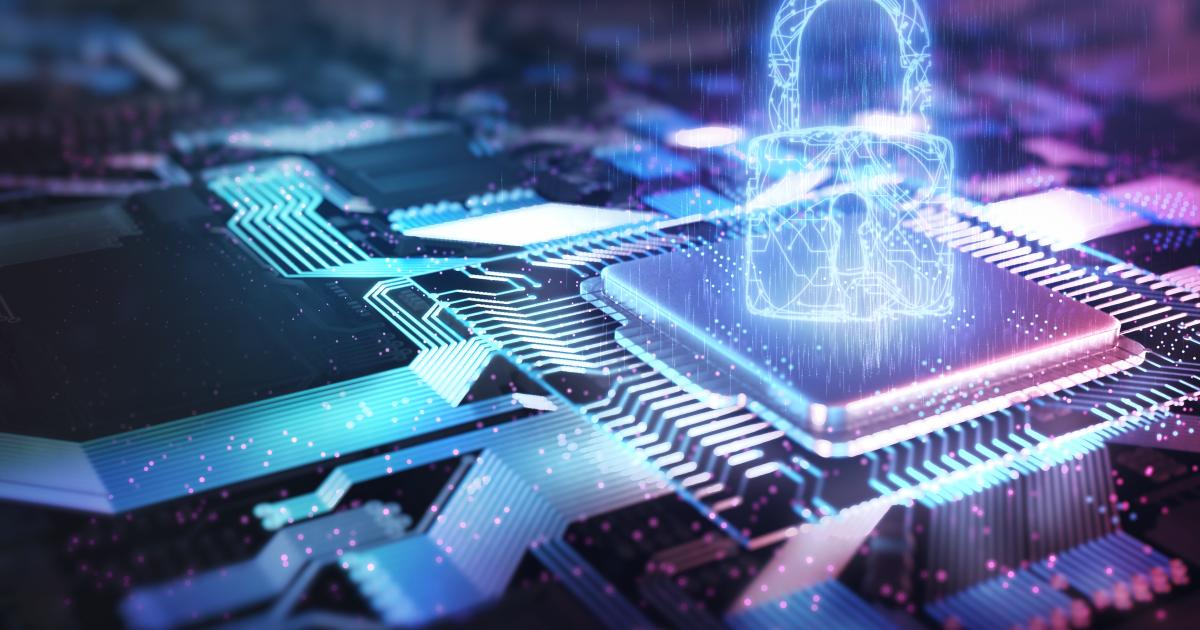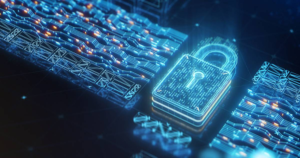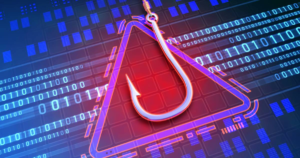The Evolution of Cyber Threats: Emerging Trends in 2023
The world of cybersecurity is in constant flux, a digital battleground where defenders and adversaries are locked in an eternal struggle. As we step into 2023, the ever-evolving landscape of cyber threats takes center stage. In this article, we’ll explore the dynamic terrain of cybersecurity, highlighting the emerging trends and the crucial need to remain ahead of the curve.
Understanding the Current Landscape

Recent Notable Cyberattacks and Their Impact
Cybersecurity is a field that thrives on real-world examples, where recent cyberattacks serve as poignant case studies. In 2023, notable incidents have shaken various industries. These attacks aren’t just abstract threats; they have tangible consequences. For instance, a major healthcare provider recently fell victim to a crippling ransomware attack, putting patient records and critical systems at risk. This incident underscores the pressing need for robust cybersecurity measures within the healthcare sector.
Key Statistics and Data on Cyber Threats in 2023
Numbers don’t lie, and when it comes to the realm of cybersecurity, statistics are powerful indicators of the current landscape. In 2023, we’ve witnessed a surge in cyber threats, with malware attacks and phishing attempts increasing in frequency. These statistics are not just figures; they provide a sense of the magnitude of the challenge we face and underscore the urgency of taking action.
The Constant Evolution of Cyber Threats
The Dynamic Nature of Cyber Threats
Cyber threats are not stagnant entities. They don’t adhere to a fixed playbook. Instead, they adapt, evolve, and transform. Cybercriminals are constantly refining their methods, making it crucial for defenders to remain agile and adaptive. Staying ahead in the cybersecurity game means understanding that the threat landscape is in a state of perpetual motion.
The Role of Technology Advancements in Threat Evolution
Technology is a double-edged sword in the world of cybersecurity. While it equips organizations with advanced tools for defense, it simultaneously empowers cybercriminals with more sophisticated weaponry. The evolution of technology plays a pivotal role in the metamorphosis of cyber threats. Advancements like AI and quantum computing bring both promise and peril, adding new dimensions to the threat landscape.
Emerging Trends in 2023
Cutting-Edge Tactics and Strategies Used by Cybercriminals
Cybercriminals are akin to tech-savvy entrepreneurs, continually innovating to stay a step ahead. In 2023, their tactics have reached new levels of sophistication. AI and deepfake technologies are now integral parts of their toolkit. These cutting-edge tactics demand proactive anticipation and a robust defense strategy to counter these emerging threats effectively.
The Influence of Geopolitical Factors on Cyber Threats
Cybersecurity is intrinsically intertwined with geopolitics. Nation-states, whether acting directly or indirectly, exert significant influence on the threat landscape. In 2023, we observe the prevalence of state-sponsored cyber espionage and sabotage, often amplified by geopolitical tensions. Understanding these dynamics is crucial for organizations seeking to fortify their defenses against nation-state threats.
Ransomware Resurgence
The Rise of Double-Extortion Ransomware Attacks
Ransomware, a longstanding threat, has taken on a more insidious form in 2023 with the emergence of double-extortion attacks. In such attacks, cybercriminals not only encrypt data but also threaten to release sensitive information unless a ransom is paid. Industries have been specifically targeted, with high-profile cases causing substantial disruption. Ransomware is no longer just a nuisance; it’s a formidable force to reckon with.
Supply Chain Attacks
The New Frontiers of Supply Chain Vulnerabilities
The interconnected web of modern supply chains offers cybercriminals fresh opportunities for exploitation. Supply chain attacks have evolved to become a strategic target for adversaries. The ripple effect of these attacks can be devastating, affecting multiple organizations down the line. Businesses must develop comprehensive mitigation strategies to safeguard their supply chains.
AI and Machine Learning in Attacks

How Cybercriminals Leverage AI for Sophisticated Attacks
AI and machine learning, once seen as allies in cybersecurity, have been weaponized by cybercriminals. In 2023, attackers employ AI-driven strategies to enhance the sophistication of their assaults. This requires organizations to adopt equally advanced defense strategies to counteract these evolving threats effectively.
This expanded content provides a more detailed perspective on the key sections of the article, giving readers a comprehensive understanding of the evolving world of cybersecurity in 2023.
IoT Vulnerabilities
The Expanding Attack Surface of the Internet of Things
The Internet of Things (IoT) has ushered in a new era of convenience and interconnectedness. However, this interconnectedness is a double-edged sword, offering cybercriminals an expanding attack surface. Smart devices, from thermostats to refrigerators, have vulnerabilities that can be exploited. Protecting these IoT devices and the networks they connect to has become an urgent priority. The increasing number of IoT-related breaches in 2023 is a testament to the importance of securing this burgeoning frontier.
Deepfakes and Social Engineering
The Use of Deepfakes in Social Engineering Attacks
Deepfake technology, once a novelty, has evolved into a formidable tool for cybercriminals engaged in social engineering. By manipulating digital content, they can impersonate individuals convincingly, from corporate executives to friends and family members. Recognizing and combating deepfake-based social engineering attacks is a significant challenge in 2023, demanding heightened awareness and vigilance.
Nation-State Threats
The Role of Nation-States in Cyber Espionage
The intertwined relationship between politics and cybersecurity has been a defining characteristic of 2023. Nation-states, whether overtly or covertly, play a significant role in cyber espionage. The exploitation of cyber tools for espionage purposes extends beyond national borders, often amplified by geopolitical tensions. These activities are indicative of the blurring lines between traditional warfare and cyber warfare, emphasizing the importance of understanding the motives and tactics of nation-state actors.
Cloud Security Challenges
Growing Cloud Adoption and Security Implications
The migration to the cloud is no longer an option but a necessity for modern organizations. However, with this transition comes a new set of security challenges. 2023 has seen the adoption of cloud services grow exponentially, making it a primary target for cybercriminals. Organizations need to grapple with issues like misconfigured cloud settings, data breaches, and insider threats within the cloud environment. The spotlight is now on ensuring robust cloud security measures to protect sensitive data and infrastructure.
Quantum Computing Threats

The Potential Game-Changer in Encryption and Cybersecurity
Quantum computing, although not yet widespread, looms on the horizon as a potential game-changer in the field of encryption and cybersecurity. These advanced computing systems have the potential to crack traditional encryption methods with ease, raising concerns about the future security of data. Organizations must prepare by researching and implementing quantum-resistant encryption and cryptographic techniques to safeguard their sensitive information in the era of quantum computing.
Insider Threats
The Underestimated Risks from Within Organizations
Not all threats come from external adversaries. Insider threats—those originating from within an organization—are frequently underestimated. In 2023, instances of employees intentionally or unintentionally jeopardizing their organizations’ security have risen. The challenge lies in implementing effective strategies for detecting and mitigating insider threats, all while maintaining a trustworthy and collaborative work environment.
Attack Vectors in Remote Work
How Remote Work Has Shifted Attack Vectors
The global shift toward remote work, accelerated by the events of 2020, continues to influence the threat landscape. Attack vectors have adapted to exploit the vulnerabilities associated with remote work environments. Cybercriminals now target not just corporate networks but also home networks and personal devices. Securing remote employees and networks has become a critical aspect of modern cybersecurity, requiring a blend of technology, policy, and awareness.
Biometric Data Theft
The Allure of Biometric Data for Cybercriminals
Biometric data, once considered the gold standard of authentication, has garnered the attention of cybercriminals. In 2023, the allure of biometric information lies in its uniqueness and perceived security. Protecting this sensitive data, whether it’s fingerprint scans, facial recognition, or iris patterns, is crucial in preventing identity theft and unauthorized access. The compromise of biometric data can have long-lasting consequences.
Critical Infrastructure Vulnerabilities

Threats to Essential Services and Infrastructure
Critical infrastructure, encompassing power grids, transportation systems, and water supplies, represents the backbone of modern society. In 2023, the vulnerability of these systems to cyberattacks has become a pressing concern. Disrupting critical infrastructure can have far-reaching consequences, affecting not only organizations but entire communities. Safeguarding these systems against potential threats is paramount.
Cybersecurity Skills Gap
The Growing Shortage of Cybersecurity Professionals
The demand for skilled cybersecurity professionals has reached unprecedented levels. However, the supply of talent falls far short of what’s required to address the evolving threats of 2023. The cybersecurity skills gap presents a critical challenge that organizations must face head-on. Strategies to address this gap include promoting education, offering training programs, and fostering a culture of continuous learning within the cybersecurity community.
Zero-Day Exploits
The Menace of Undisclosed Software Vulnerabilities
Zero-day exploits, the bogeymen of the cybersecurity world, target vulnerabilities in software that are unknown to the software developer. Cybercriminals exploit these undisclosed weaknesses, leaving organizations vulnerable. Preparing for the unexpected is key, with organizations needing to develop rapid-response strategies and collaborate with developers to mitigate the impact of zero-day exploits.
Regulatory and Compliance Changes

Evolving Data Protection Laws and Their Impact
Data protection laws are in a constant state of flux. In 2023, regulatory changes impact organizations across various industries. Understanding these evolving legal frameworks and their consequences is imperative for ensuring compliance and data protection. Failure to do so may result in legal consequences and the loss of trust from customers and stakeholders.
Conclusion
Reflecting on the Dynamic Nature of Cyber Threats
As we navigate the ever-evolving landscape of cyber threats in 2023, it’s evident that the only constant in the world of cybersecurity is change. Threats adapt, new vulnerabilities emerge, and cybercriminals innovate. The imperative is clear—organizations and individuals must proactively bolster their cybersecurity measures. The risks are real, but so are the solutions. Cybersecurity isn’t a destination; it’s a journey, one that demands unwavering determination to secure the digital realm and stay one step ahead of the evolving threats. In this journey, the proactive approach to cybersecurity is not a choice; it’s a necessity.
Frequently Asked Questions (FAQ)
What is cybersecurity?
Cybersecurity is the practice of protecting computer systems, networks, and digital data from theft, damage, or unauthorized access. It encompasses a wide range of technologies, processes, and practices designed to safeguard information and digital assets.
Why is cybersecurity important?
Cybersecurity is crucial because it helps prevent data breaches, financial losses, and the compromise of sensitive information. In an increasingly digital world, where personal and business data are at risk, cybersecurity is essential to protect privacy and maintain trust.
What are the common types of cyber threats?
Common cyber threats include malware (viruses, ransomware, spyware), phishing attacks, hacking, data breaches, denial-of-service (DoS) attacks, and social engineering attempts. Each of these threats poses specific risks to individuals and organizations.
How can I protect my computer from malware and viruses?
To protect your computer from malware and viruses, regularly update your operating system and software, use reputable antivirus software, be cautious about downloading files or clicking on links from unknown sources, and practice safe browsing habits.
What is two-factor authentication (2FA), and why is it important?
Two-factor authentication (2FA) is an additional layer of security that requires users to provide two different types of verification to access an account. It enhances security by requiring something you know (e.g., a password) and something you have (e.g., a smartphone or a security token) to log in, making it more challenging for attackers to gain unauthorized access.
How can I create strong, secure passwords?
To create strong passwords, use a combination of uppercase and lowercase letters, numbers, and special characters. Avoid using easily guessable information, such as birthdates or common words. Consider using a passphrase, which is a longer sequence of words or a sentence, to enhance security.
What should I do if I receive a suspicious email or message?
If you receive a suspicious email, avoid clicking on any links or downloading attachments. Instead, verify the sender’s identity through another communication channel. If the email is a phishing attempt, report it to your email provider or IT department.
How often should I update my software and operating system?
Regular software and operating system updates are essential for patching security vulnerabilities. Set your devices and software to update automatically, and apply updates as soon as they become available to ensure the latest security patches are in place.
What is a VPN, and why should I use one?
A VPN, or Virtual Private Network, encrypts your internet connection, making it more secure and private. It’s especially important when using public Wi-Fi networks, as it helps protect your data from eavesdropping and enhances your online privacy.
What can I do to protect my children from online threats?
To protect children from online threats, educate them about safe internet usage, use parental control software to filter content and monitor their online activities, and maintain an open line of communication to address any concerns or issues that may arise.
Remember that cybersecurity is an ongoing effort, and staying informed about the latest threats and best practices is essential to maintaining your digital safety.
In our previous post, we discussed the essential topic of How to Protect Your Passwords: Best Practices in Password Management. Understanding and implementing strong password security is just one piece of the puzzle in the ever-evolving landscape of cybersecurity. Today, we’re diving deeper into the broader perspective of the cybersecurity domain.
To gain even more insights into the evolution of cyber threats and the future landscape, you might want to explore this comprehensive article on Medium: The Evolution of Cyber Threats and Its Future Landscape. The author provides an in-depth analysis of the shifting threats in the cybersecurity realm, offering a valuable external perspective to complement our internal discussions. It’s an informative read that will further expand your knowledge in this critical field.




